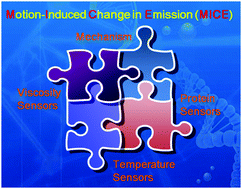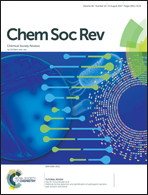Motion-induced change in emission (MICE) for developing fluorescent probes
Abstract
The need for detecting and labelling environmentally and biologically important analytes has driven considerable research efforts in developing fluorescent probes. During the sensing process, molecular motions (i.e., molecular rotations or vibrations) of a flexible fluorescent probe can be significantly altered by its embedding micro-environment or analyte, thereby leading to substantial changes in readout signals. Motion-induced change in emission (MICE) can be utilized as an effective sensing mechanism. However, in comparison to the well-understood sensing mechanisms, such as photo-induced electron transfer (PET), intramolecular charge transfer (ICT), aggregation-induced emission (AIE) and disaggregation-induced emission (DIE), MICE has not been systematically discussed to date. In this tutorial review, we will summarize the concept and mechanisms of MICE for developing single-molecular fluorescent probes, present unique advantages of MICE based sensors, demonstrate their various applications, and discuss technical challenges in this field. We expect that this review will promote a deeper understanding of MICE and facilitate the development of novel MICE based probes.

- This article is part of the themed collection: Probes for in vitro and in vivo fluorescence imaging


 Please wait while we load your content...
Please wait while we load your content...